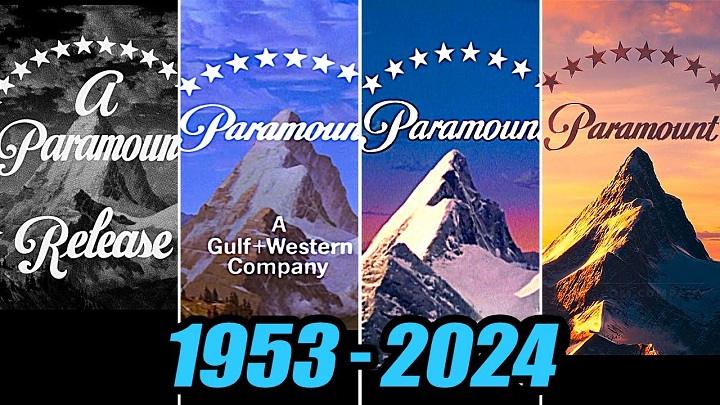Paramount Pictures, one of the oldest and most prestigious film studios in Hollywood, has played a pivotal role in shaping the global film industry. Since its founding in 1912, Paramount has been responsible for producing some of the most iconic films in cinema history. From classic movies like “The Godfather” and “Sunset Boulevard” to modern blockbusters such as “Transformers” and “Mission: Impossible,” Paramount Pictures has consistently delivered high-quality entertainment to audiences worldwide. This blog post delves into the fascinating history, major career milestones, and far-reaching influence of Paramount Pictures on the world of film and beyond.
The Early Years: Establishment and Rise

Paramount Pictures was officially founded on May 8, 1912, by Adolph Zukor, a Hungarian immigrant with a vision to create feature-length films. At a time when most movies were short films, Zukor saw the potential of longer narratives that could tell more complex and engaging stories. The company’s early years were marked by rapid expansion and innovation. Zukor’s strategy of signing major stars to exclusive contracts helped Paramount establish itself as a major player in the burgeoning film industry. The studio quickly gained a reputation for producing high-quality films that appealed to a broad audience.
During the 1920s, Paramount became known for its lavish productions and roster of talented stars, including Gloria Swanson, Rudolph Valentino, and Clara Bow. The studio’s financial success allowed it to acquire other companies, including the Famous Players-Lasky Corporation, making it the largest and most powerful studio in Hollywood at the time. Paramount’s strategy of vertical integration—controlling production, distribution, and exhibition—set the standard for other studios and helped it dominate the film industry.
The Golden Age of Hollywood
The 1930s and 1940s are often referred to as the “Golden Age of Hollywood,” and Paramount Pictures was at the forefront of this era. With its stable of stars and directors, including Cecil B. DeMille, Billy Wilder, and Preston Sturges, Paramount produced a string of successful films that are now considered classics. Films like “Wings” (1927), the first film to win the Academy Award for Best Picture, and “Sunset Boulevard” (1950), a dark tale of Hollywood’s fading glamour, solidified Paramount’s reputation as a leader in cinematic excellence.
Paramount was also known for its diverse range of genres during this period, producing everything from comedies and dramas to adventure films and musicals. The studio’s flexibility and willingness to experiment with different styles and storytelling techniques allowed it to appeal to a wide range of audiences, ensuring its place at the top of the industry.
Challenges and Resilience: The Post-War Era
The post-war era brought significant challenges for Paramount Pictures. The rise of television in the 1950s posed a threat to the film industry as audiences increasingly turned to the small screen for entertainment. Additionally, the U.S. Supreme Court’s decision in the 1948 Paramount Decree forced the studio to divest its theater chain, effectively ending its vertical integration model.
Despite these challenges, Paramount adapted to the changing landscape of entertainment. The studio shifted its focus to producing fewer, higher-quality films and began exploring new formats such as widescreen and 3D to lure audiences back to theaters. This period saw the release of some of Paramount’s most memorable films, including “Roman Holiday” (1953) and “The Ten Commandments” (1956), which showcased the studio’s ability to innovate and adapt in the face of adversity.
Modern Era: Blockbusters and Franchises
The 1970s marked a new chapter for Paramount Pictures as it embraced the era of the blockbuster. Under the leadership of executives like Robert Evans, the studio produced a series of hugely successful films that defined the decade. One of the most notable successes was “The Godfather” (1972), directed by Francis Ford Coppola. The film was a critical and commercial triumph, winning three Academy Awards, including Best Picture, and spawning two sequels.
Throughout the 1980s and 1990s, Paramount continued to produce blockbuster hits, including the “Indiana Jones” series, “Top Gun” (1986), and “Forrest Gump” (1994). The studio also capitalized on the growing popularity of franchises, launching successful series such as “Star Trek” and “Mission: Impossible.” These films not only brought in significant box office revenue but also created a loyal fan base and expanded the studio’s influence in popular culture.
Paramount’s Influence on the Film Industry
Paramount Pictures has had a profound impact on the film industry, both in terms of artistic innovation and business practices. The studio’s commitment to high production values and storytelling excellence has set a benchmark for quality in Hollywood. Paramount’s success with the blockbuster model helped establish the financial viability of large-scale, high-budget films, influencing how movies are financed and marketed today.
Additionally, Paramount has been a pioneer in embracing new technologies and distribution methods. The studio was among the first to recognize the potential of home video and cable television, allowing it to reach audiences beyond traditional theatrical releases. Paramount’s early adoption of digital distribution and streaming services has also positioned it as a leader in the evolving media landscape.
Expanding Into Television and Streaming
In addition to its success in film, Paramount Pictures has made significant strides in television and streaming. The studio’s television division, Paramount Television Studios, has produced numerous popular TV shows, including “Cheers,” “Frasier,” and “Star Trek: The Next Generation.” These shows not only found success on television but also became cultural phenomena, demonstrating Paramount’s ability to create compelling content across multiple platforms.
In recent years, Paramount has expanded its footprint in the streaming space with the launch of Paramount+. The streaming service offers a vast library of films and television shows from Paramount’s extensive catalog, as well as original programming exclusive to the platform. This move reflects the studio’s recognition of the shifting media landscape and its commitment to adapting to new ways audiences consume content.
The Future of Paramount Pictures
As Paramount Pictures looks to the future, it faces both challenges and opportunities. The rise of digital streaming services and the changing habits of moviegoers have forced traditional studios to rethink their strategies. Paramount has responded by investing in streaming and digital distribution while continuing to produce big-screen spectacles that attract audiences to theaters.
The studio’s recent successes, such as the “A Quiet Place” series and the continuation of the “Mission: Impossible” franchise, suggest that Paramount is well-positioned to navigate the evolving entertainment landscape. With a focus on quality storytelling, innovation, and strategic partnerships, Paramount Pictures is poised to remain a major force in the film and television industries for years to come.
Related Post:
Baby Driver 2: A Comprehensive Look at the Life, Career, and Influence
Dragon Ball Z Live Action: A Comprehensive Look at the Life, Career and Influence
Paramount Pictures has a storied history that spans over a century, marked by innovation, resilience, and a commitment to storytelling excellence. From its early days as a pioneer of feature-length films to its current position as a major player in both film and streaming, Paramount has consistently pushed the boundaries of what is possible in entertainment. As the industry continues to evolve, Paramount Pictures remains a symbol of cinematic artistry and a testament to the enduring power of film.
This blog post provides a comprehensive overview of Paramount Pictures, highlighting its significant contributions and ongoing influence in the entertainment industry.



